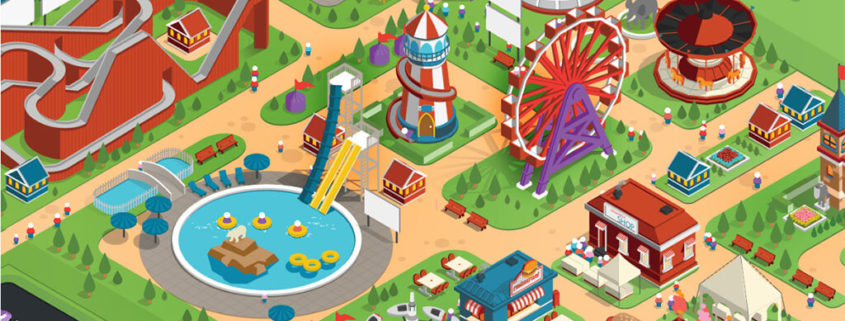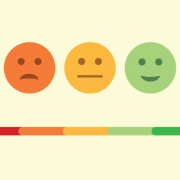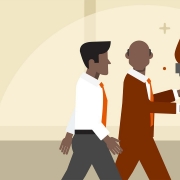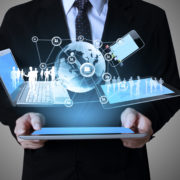Gamification and HR
As we all know, young adults have been introduced to the world of computer and video games early on in their lives. Nowadays, mobile games are a must on smartphones, the more complex, the better. HR and gaming have started working together for some time now, with the purpose of making otherwise dull processes more interesting and increase engagement levels. Founded in 1948, the Society for Human Resource Management (SHRM), has recently revealed there are 2 types of gamification:
- Structural gamification – applying gaming rewards such as badges, levels, leaderboards, etc to job-related activities.
- Serious Games – where a simulation is created for specific purposes such as training or sales simulation.
Although the whole process of gamification is definitely attractive, it requires serious financial investments in order to increase the visibility and importance of the HR department in the organisation. In general, employees tend to not appreciate anything coming from HR, but for sure they like games. Combining the various and tedious HR processes with games, almost instantly boredom is transformed into fun times and great engagement. Gamification has been discovered to work best with organisational practices such as: recruitment, training, referral recruitment, development and wellness. Of course, there are some instances in which games are not recommended at all, for instance, administrative processes. The risks in this instance are tremendous due to the simple fact that companies can suffer greatly. Administrative processes should be done successfully by everyone.
Here are some of the ways in which gamification can speed up various HR processes at the work workplace:
- Training: Turn your company’s training into a game. Employees will have to work through numerous tasks in order to obtain points and badges in order to ‘level up’.
- Cultural Alignment: Employees will be rewarded with ‘culture points’ if they live by the organisation’s core values. Offer people the chance to notice other employees that go the extra mile in regards to cultural aspects.
- Wellness: It is essential that employees are using wearables such as Fitbit. From the data collected from these wearables, employees have the chance to earn wellness points and actually make a competition out of it with the others. This method helps a lot with morale and engagement.
At their very core, people are competitive, they like to challenge themselves one way or another. Based on this idea, every employee wants to be valued for the work and effort he or she puts into the company. HR departments are struggling annually or biannually to collect performance reviews from employees. If the organisation decides to make a game out of it, engagement would soar through the roof. While they complete their paperwork, employees can also see the progress of their colleagues. This way, people get motivated to move faster and be the first ones to finish.
In a recent Gallup research, it has been discovered that more and more organisations are interested in implementing gamification. In the same study, it has been shown that only 31% of employees are still engaged at their job. And, perhaps not that surprising, millennials are the least engaged. Here is where gamification can come in. By using it and deploying it efficiently, engagement levels could rise but it can also act as a magnet for young talents. Given the fact that millennials will represent 75% of the workforce by 2025 it is of utmost importance that organisations start to treat this matter as seriously as possible.
In order to address the low engagement levels, many Fortune 500 companies have launched their pilot gamification programmes. Here are some examples:
Learning at Walmart: Using short games to bolster safety training
In 2015, Walmart started using gamification in order to offer their 5,000 partners from 8 Walmart distribution centres the best possible safety training. The stakes for Walmart were high because they were addressing one of their bigger issues: a scattered workforce that had to adhere to the company’s safety procedures. The gamification of safety training exercises has been incredibly beneficial. Walmart saw a 54% decrease in incidents in their 8 distribution centres, whilst employees loved the competitiveness and togetherness the games brought. Soon after the programme started, employees started talking not only about the games itself but of the importance of safety protocols. Given the fact that gamification has an ‘emotional aspect’ to it, it is obvious it can have important benefits to employee behaviour.
Internal Collaboration at Qualcomm: Gamification used to increase collaboration between employees.
Qualcomm implemented a simple and very efficient technique. In the organisation’s internal Q&A system, employees can ask and answer distinct questions and the best answers get to be voted up and rise through the rankings. Through this method, Qualcomm employees receive bonus points for their activity and level of engagement. Gathering enough points earns them badges, although there are unique badges that are being offered to people who overachieve. For example, an employee will receive points, a special badge (The Archaeologist) and for answering a question that was unanswered for 30 days. Furthermore, that employee gets recognition on the internal website and the badge will appear on his or her profile in order to reward their willingness to help.
This is where Great People Inside comes to your aid. Our online platform offers the best solutions and tools for your company to thrive in every type of industry and any possible situation your organisation may find itself. In terms of lowering your employee turnover rates, we recommend our GR8 Full Spectrum assessment for hiring and 360° Survey for retention. Finding the right talent, the best fit for the job and your organisation can be a very challenging task. It requires deep knowledge of your own organisation’s culture and a keen understanding of the candidate’s personality, strengths, interests, work style and other characteristics. Our technology and solutions will do the work for you, helping you find employees who can flourish and reach the highest performance required to constantly bring your company forward.
Request a free demo:
Sources:
https://www.forbes.com/sites/jeannemeister/2015/03/30/future-of-work-using-gamification-for-human-resources/#1bafcb1d24b7
http://www.creativehrm.com/hr-gamification.html












